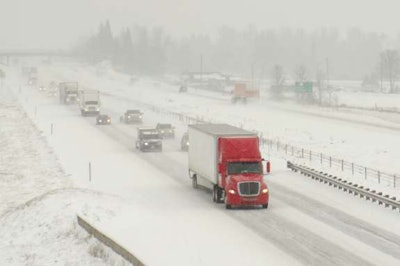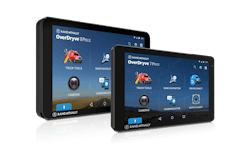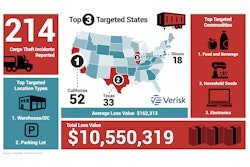
by Kim McDonnell Manager, Customer Experience for the RoadPro Family of Brands
This year has seen extreme climate changes across the country, including snow, much earlier than expected. It is always a good idea to be prepared for all of the temperature and road changes you may encounter, and with the colder months upon us, you certainly don’t want to be left out in the cold.
From simple maintenance adjustments to essential equipment to have in your truck, here are a few tips to keep you safe on the road all winter long.
Battery: Cold temperatures can drain your battery, and you certainly don’t want to have a dead battery when it is freezing outside. Since the lifespan of most truck batteries is three to five years, weather conditions can impact their operation. It is a good idea to know when it was that you last replaced your battery and if it is close to the end of its lifespan, make sure to get a new one.
Fuel: Diesel is rich with paraffin, which means it tends to thicken up in cold weather. It’s a good idea to have a diesel conditioner and anti-gel fuel additive, such as Howes Diesel Treat, on hand to help fight gelling in colder climates.
Slow Down: Remember, temperatures and road conditions during the colder months can change quickly. Black ice, snow, sleet, and especially other drivers can make winter feel like you’re driving an obstacle course every day. The slower you drive, the more time you have to react.
Lights: Remember, visibility can be significantly impacted by winter weather. Meaning that you need to do everything you can to be highly visible! Make sure all your lights are functioning properly and clear of snow and ice. Make it a practice to walk around your truck and check all of your lights every time you stop.
Cold-Weather Gear: Making sure you have extra layers of clothing, gloves, rain gear, a good pair of boots, and blankets on your truck will prepare you for anything winter throws your way. Check out some of the great options from Black Canyon Outfitters.
Other essentials: In addition to warm clothing in the winter months, it is essential to have a few other items in your truck. A good flashlight and extra batteries are a must, like the ones from LUMAGEAR. A portable charger or power bank if you are unable to charge your phone because your truck won’t start. A bag of sand or kitty litter for traction, a small shovel, and extra food and water if you get stuck in the snow.
Know your limits: If you are not comfortable driving in the weather conditions, don’t hesitate to pull over and wait it out. Remember what’s important – family, friends, life. If it doesn’t feel right, then it’s not worth it.
Communication: Keep in touch by utilizing your CB radio, not only with your dispatcher but also with the drivers ahead of you. They will be able to advise of road conditions that you are heading towards and possibly direct you away from potential hazards. Don’t have a CB radio? You may think you don’t need one but remember that cell phone signals can be impacted by severe weather, and you probably don’t know that drivers’ cell phone number that is ahead of you. Having a CB radio onboard can be a lifesaver. There are several great options from RoadKing like the RK5640.
Windshield wipers and fluid: Make sure to carry a spare set of windshield wipers like those from WeatherAce. You never know when one might fail or become frozen to your windshield and tear. You want to make sure you always have a clear view out that windshield. Also, have plenty of de-icing windshield fluid on hand as what is coming off the roads during a winter storm can impact visibility, and you want to make sure you can quickly clear it away.
Pay Attention to Tire Spray: This is probably one of the most important driving tips we have heard from many truck drivers. If there is a lot of water coming off the tires of the vehicles around you, most likely, the roads are just wet. The less tire spray, the better chance that the roads are beginning to freeze. Again slow down and adjust your speed for driving conditions.











